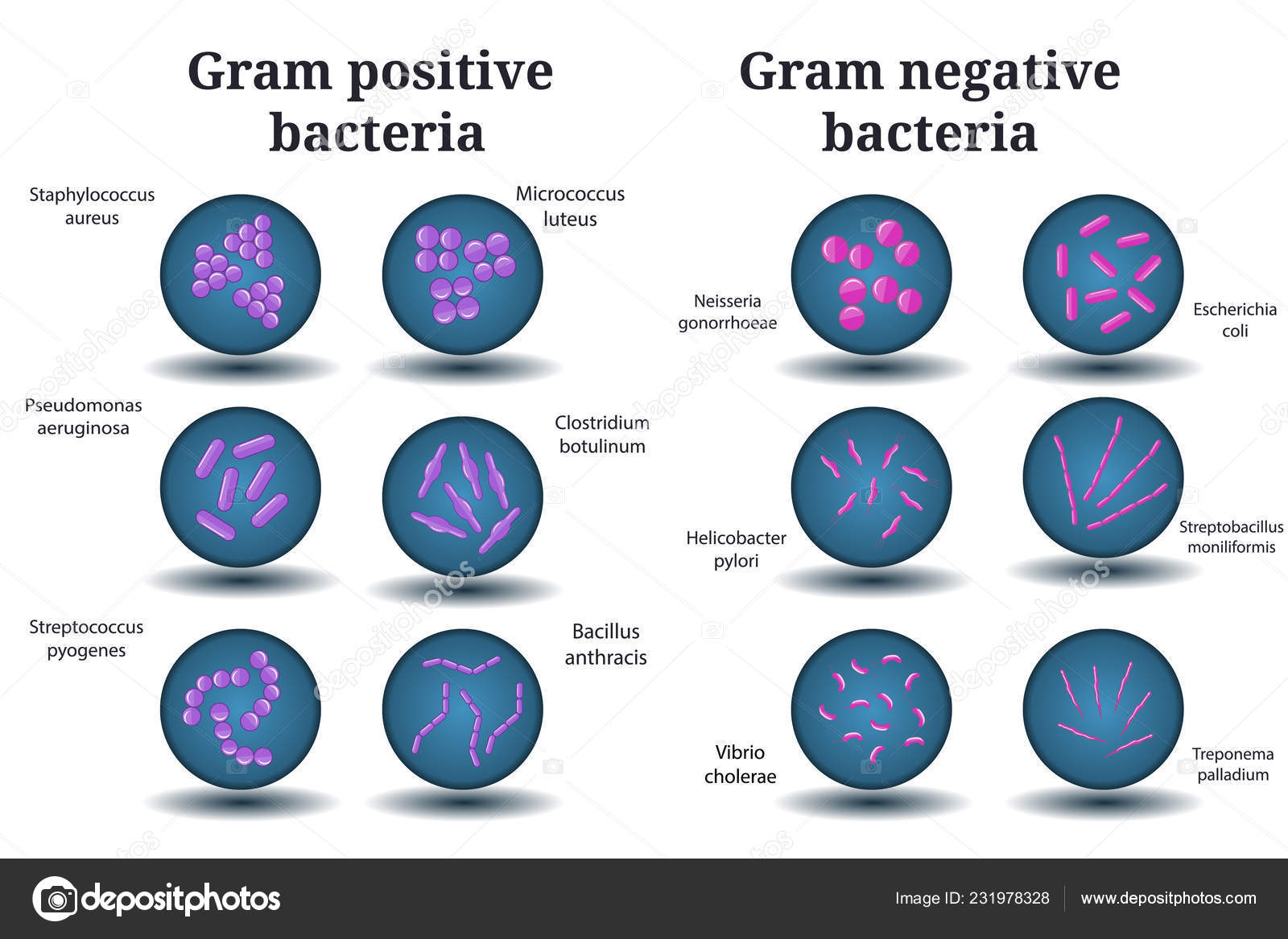

Thus, the two types of bacteria are distinguished by gram staining.

Overall, the toxins produced by Gram-negative bacteria can cause many symptoms and complications, and treatment typically involves antibiotics and supportive care for any related symptoms or complications. The gram-positive bacteria retain the crystal violet colour and stain purple whereas the gram-negative bacteria lose crystal violet and stain red. Glycan chains consisting of N-acetylglucosamine and N-acetylmuramic acid.Main components of peptidoglycan include: By enclosing the plasma membrane, it provides a protective layer that protects the cell from lysis. LPS can contribute to sepsis and other conditions associated with Gram-negative bacterial infections. The major difference between Gram-positive and Gram-negative peptidoglycan involves the thickness of the layers surrounding the plasma membrane. In Gram positive bacteria, the peptidoglycan makes up between 50 and 90 of the cell wall (between 20 and 80 nm in thickness). In Gram-positive bacteria it is thought that the peptidoglycan is laid down in cables. Chemically, 60 to 90 of the Gram-positive cell wall is peptidoglycan. Lipopolysaccharides (LPS) are also part of the cell wall of Gram-negative bacteria and can stimulate the immune system to produce inflammation and other responses. In electron micrographs, the Gram-positive cell wall appears as a broad, dense wall 20-80 nm thick and consisting of numerous interconnecting layers of peptidoglycan (see Figs. Gram-positive bacteria stain blue when this stain is applied to them. Tetanus toxin: produced by Clostridium tetani and can cause muscle spasms and other symptoms associated with tetanus, a serious infection that affects the nervous system.ģ. Gram-positive bacteria are classified by the color they turn after a chemical called Gram stain is applied to them.MacConkey agar can be used to distinguish among gram-negative bacilli such as E. There is no connection between the shape of a bacterium and its color upon Gram staining there are both gram-positive rods and gram-negative rods. Pertussis toxin: produced by Bordetella pertussis and can cause whooping cough, a respiratory infection that can be life-threatening, especially in infants and young children. Coccobacillus: Oval and similar to coccus (circular shaped bacterium).Gram-negative bacteria show pink or red on staining and have thin. Gram-positive bacteria have thick and broad membranes, whereas gram-negative bacteria have thin membranes that are difficult to. Cholera toxin: is produced by Vibrio cholerae and can cause severe diarrhoea, dehydration, and electrolyte imbalance. Summary Gram-positive bacteria show blue or purple after gram-staining in a laboratory test. If you’re ever heard bacteria referred to as gram-negative or gram-positive, it all boils down to the bacterial organism’s protective outer layer, also known as the membrane.coli) and can cause bloody diarrhoea, kidney failure, and other complications. Shiga toxins: are produced by certain strains of Escherichia coli (E.Some examples of exotoxins produced by Gram-negative bacteria include: Exotoxins can cause a range of symptoms depending on the type of toxin and the affected tissues or organs. Exotoxins are proteins produced by Gram-negative bacteria and secreted into the surrounding environment.


 0 kommentar(er)
0 kommentar(er)
